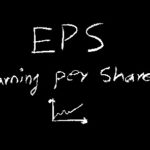In the world of art and creativity, there exists a fine line between reality and imagination. This dichotomy is often explored in various forms of storytelling, where the boundaries of truth and fiction are blurred to captivate audiences and provoke thought. One such example of this is the digital artwork titled “Tall Tales,” which has sparked a debate surrounding the use of artificial intelligence (AI) in its creation.
The Origin of Tall Tales
“Tall Tales” is a stunning piece of digital art created by the talented artist Robbie Barrat. The artwork features a surreal landscape filled with vibrant colors and intricate details, showcasing a whimsical world that seems to defy the laws of physics. The piece has garnered attention for its unique aesthetic and mesmerizing visuals, leading many to believe that it was generated using AI technology.
AI in Art
Artificial intelligence has made significant strides in the field of art in recent years. From creating music compositions to generating visual art, AI algorithms have been used to push the boundaries of creativity and explore new forms of expression. Artists and technologists alike have embraced AI as a tool to enhance their creative process and unlock new possibilities in artistic creation.
The Misconception of AI in Tall Tales
Despite the speculation surrounding the origins of “Tall Tales,” the truth behind its creation is far simpler than what many may believe. Robbie Barrat, the artist behind the artwork, has clarified that “Tall Tales” was not generated using AI. Instead, the piece was meticulously crafted by Barrat himself, using traditional digital art techniques and his own creative vision.
The misconception that “Tall Tales” was made with AI highlights a larger issue in the art world – the tendency to attribute creativity solely to technology rather than human ingenuity. While AI certainly has its place in art and can be a powerful tool for artists, it is essential to recognize and celebrate the role of human creativity in the artistic process.
The Impact of AI on Art
Despite the misunderstanding surrounding “Tall Tales,” the intersection of AI and art continues to be a fascinating and evolving field. AI technologies have the potential to revolutionize the way art is created, experienced, and interpreted. From generating novel artistic styles to helping artists explore new mediums and techniques, AI has opened up a world of possibilities for creative expression.
As AI technologies become more advanced and accessible, artists are increasingly incorporating them into their practice to push the boundaries of art and challenge traditional notions of creativity. Whether it’s using AI algorithms to generate complex visual patterns or creating interactive art installations powered by machine learning, artists are harnessing the power of AI to expand their artistic horizons and engage with audiences in new and exciting ways.
The Future of AI in Art
As we look towards the future, the role of AI in art is only expected to grow. With advancements in machine learning, deep learning, and other AI technologies, artists will have access to powerful tools that can inspire new forms of artistic expression and creativity. Whether it’s exploring the potential of generative adversarial networks (GANs) to create hyper-realistic images or using natural language processing to generate poetry and prose, the possibilities for AI in art are endless.
However, it is crucial to remember that while AI can enhance the creative process, it is ultimately the artist’s unique perspective, vision, and talent that breathe life into their work. As we continue to navigate the complex relationship between technology and art, it is important to celebrate the human element in creativity and recognize the irreplaceable role that artists play in shaping the cultural landscape.
In conclusion, “Tall Tales” serves as a reminder that art is a reflection of the human experience and that creativity transcends the limitations of technology. While AI undoubtedly holds great promise for the future of art, it is the fusion of human imagination and innovation that truly makes artistic endeavors come to life. Only by embracing both the possibilities of AI and the enduring power of human creativity can we fully appreciate the richness and diversity of the art world.







Leave a Reply